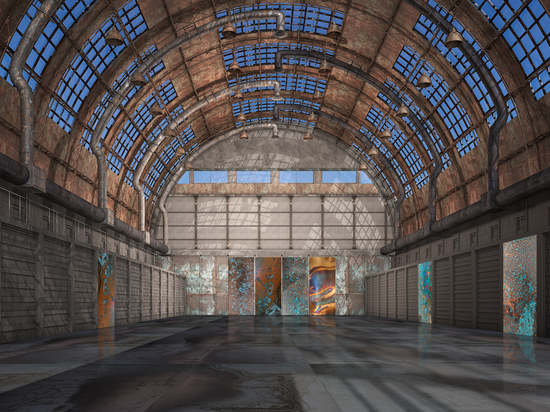
#Industry News
Stainless Concrete, a Special Steel on a Gray Scale between Electrolysis and Art
The Planium Steel called Stainless Concrete
From a chromatic point of view, Stainless Concrete echoes Cement and for this reason, despite being a Steel, it has taken this name. However, this is not enough to fully evoke the image of a polychromatic color: Ash Gray, Khaki, Shell, Platinum. To prevail is an effect of abstraction, almost a mystery with clear characters. This is a connotation that, like Calamine - a special finish proposed by Planium, a very strong steel oxide on the market - makes it particularly attractive for architects and beyond. In this case, however, it is the shade of gray - color of steel such as zinc and aluminum - which has an impacting effect on the overall view, which is therefore mostly "cold" and with an elegant but different coldness from that of stainless steel, because it is less monochordic and with different gray shades.
The Electrolytic Technique for a Material with an Industrial Setting, with Workshop Style
The chromatic effect, or a certain "pattern" that is repeated by showing a grayscale with enviable brightness, especially for some projects, is then obtained through electrolysis processes. It was said that the setting offered by this steel lends itself clearly to its chromatic "vocation" to focus on grays - but white is also present - and yet a design choice could make it tend towards a gray that is fuller, almost a Slate. Then in doing so it will be the most suitable for an Industrial type setting, especially if laid on the floor giving some reflections of brightness and shade, of chiaroscuro as in a Planium project, the one for the Agostini Museum, in which the interiors recalled faithfully and with a play of light, the scenario of a vintage motorcycle workshop that, a bit like the Industrial style, reminds us of the first decades of the second post-war period.
For a quick and dry installation according to the technological systems designed by Planium - and among the fastest to adopt - is the magnetic one of MG01, which uses the principle by which the metal core contained in the textures magnetically binds to the subtle substrate of which the System is equipped with. Other possible dry systems - easy to remove and to apply because without glues - are AP01 Lay (the fastest), PL01 - one click with pressure fixing between tiles and SM02 Evolution, a mechanical system with fixing screw between slab and slab.




